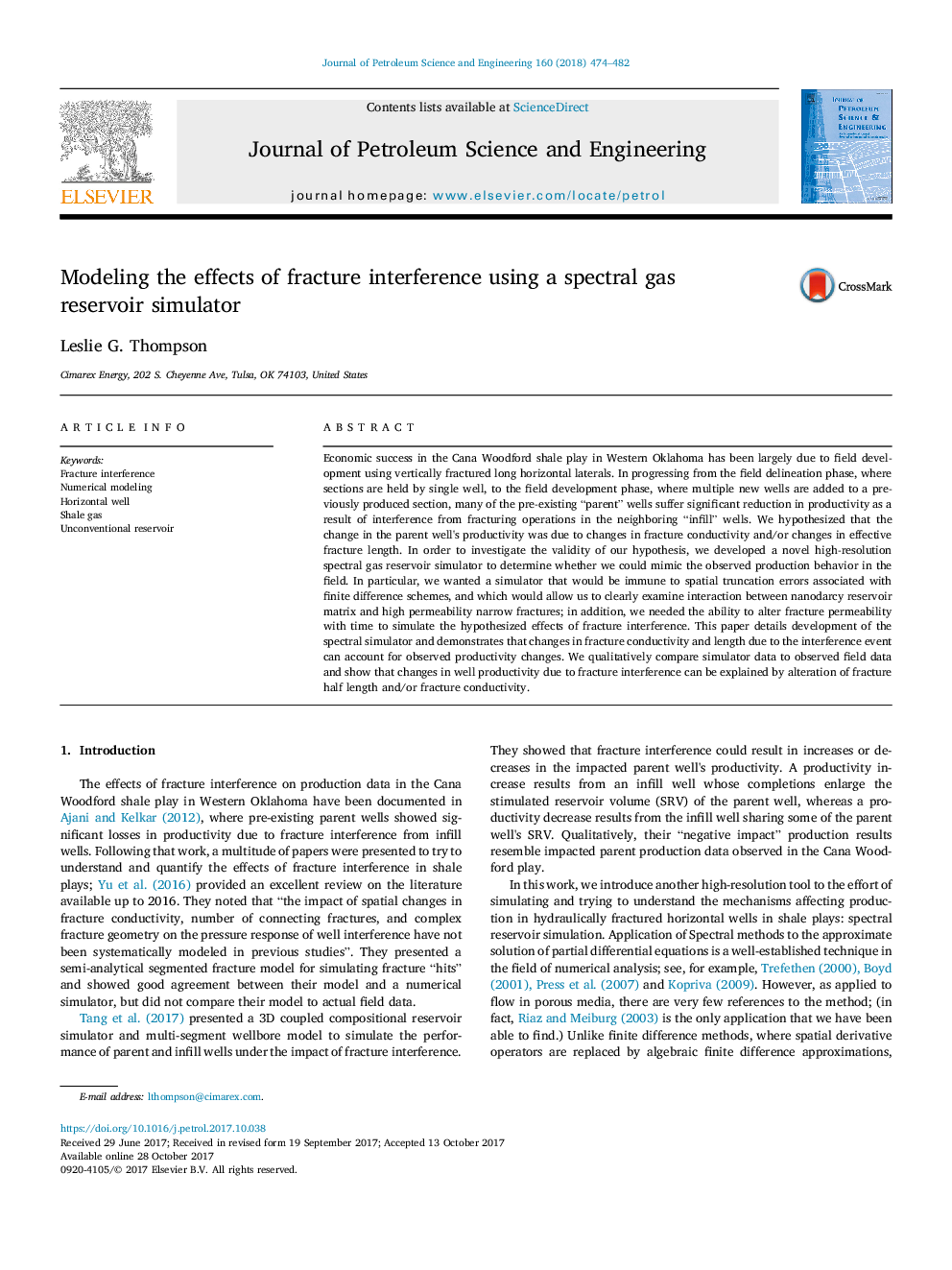| Article ID | Journal | Published Year | Pages | File Type |
|---|---|---|---|---|
| 8125569 | Journal of Petroleum Science and Engineering | 2018 | 9 Pages |
Abstract
Economic success in the Cana Woodford shale play in Western Oklahoma has been largely due to field development using vertically fractured long horizontal laterals. In progressing from the field delineation phase, where sections are held by single well, to the field development phase, where multiple new wells are added to a previously produced section, many of the pre-existing “parent” wells suffer significant reduction in productivity as a result of interference from fracturing operations in the neighboring “infill” wells. We hypothesized that the change in the parent well's productivity was due to changes in fracture conductivity and/or changes in effective fracture length. In order to investigate the validity of our hypothesis, we developed a novel high-resolution spectral gas reservoir simulator to determine whether we could mimic the observed production behavior in the field. In particular, we wanted a simulator that would be immune to spatial truncation errors associated with finite difference schemes, and which would allow us to clearly examine interaction between nanodarcy reservoir matrix and high permeability narrow fractures; in addition, we needed the ability to alter fracture permeability with time to simulate the hypothesized effects of fracture interference. This paper details development of the spectral simulator and demonstrates that changes in fracture conductivity and length due to the interference event can account for observed productivity changes. We qualitatively compare simulator data to observed field data and show that changes in well productivity due to fracture interference can be explained by alteration of fracture half length and/or fracture conductivity.
Related Topics
Physical Sciences and Engineering
Earth and Planetary Sciences
Economic Geology
Authors
Leslie G. Thompson,
